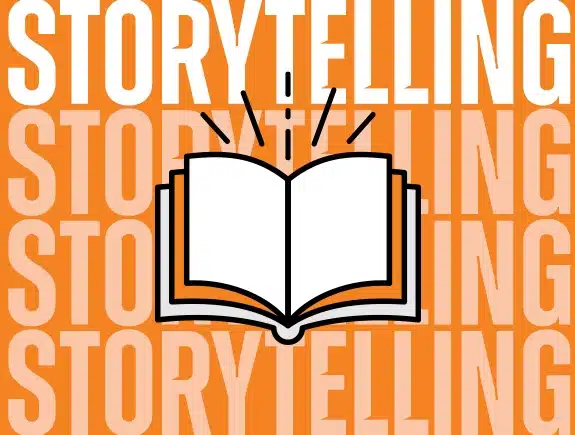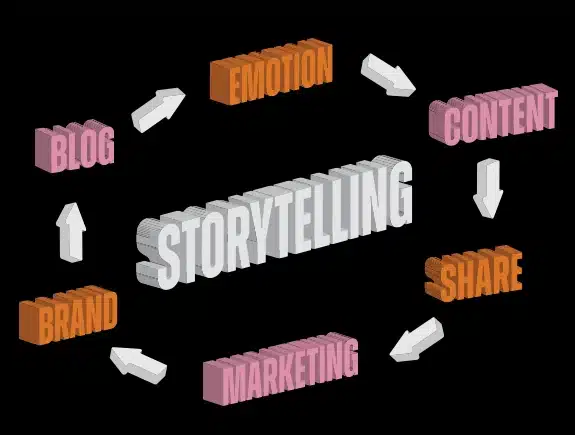In a world, flooded with advertisements, propaganda, and brand messages, attracting the customer’s attention becomes a real challenge. In an overcrowded market, storytelling is a powerful tool for designers, helping them to create effective brand narratives that attract the attention of the audience.
By creating visuals that connect with customers, businesses can build meaningful relationships with them. Besides, they can maintain a high level of brand loyalty and create a significant difference in relation to the competition.
This is supported by the data that up to 68% of people buy products of a certain brand based on their brand stories. At the moment when the customer realizes a true connection with the chosen brand, it is storytelling in design that can take the credit for success.
More functionality and aesthetics bring the product and the entire brand the opportunity to explore new frontiers. In this way, via design, the brand stirs emotions, values, and the experience that the customer has when buying a certain product.
It is in this text that we want to deal with telling stories through design and presenting our thoughts on this topic. Of course, they come after many years in this business and after many stories told for brands from our area, but also beyond that.
How to understand the power of storytelling
Imagine being completely drawn into an enchanting story that teleports you to a completely different time, a different world. Also, it awakens your emotions and leaves you completely breathless.
Well-told stories have the power to completely engulf us, affect our emotions and capture all our senses. When you understand the power of storytelling, then you easily understand how important it is to create compelling brand narratives through design.
The psychological impact of Storytelling on perception and Emotions
At its very core, storytelling taps into all the familiar ways our brains process information. When our brain comes into contact with a story, it activates, just like many other zones in it. These zones are responsible for understanding language, sensory perception and our emotional response.
It is exactly this activation of multiple areas in the brain that makes stories more memorable than simply presented facts and information.
Our mind is programmed to understand and follow well-told stories. Stories give us a sense of consistency and constancy, while at the same time helping us understand complex ideas.
For brands, this all means that by using storytelling, the brand can shape the public’s perception of it, evoke feelings, and create a strong connection with the target group.
The connection between storytelling and brand perception
Storytelling has a not-inconsiderable impact on how customers see a brand and how they connect with it. When a brand translates stories into design, it can thus improve the promotion of a product or service. This way, it will generate many emotions in the target group, but also a sense of belonging and loyalty to the brand, which offers them exactly what they need.
Brand stories help customers connect with the brand’s values, purpose and vision. It is this connection, through the combination of the strong influence of design, emotions and value package, that empowers them to become the best brand ambassadors.
When a brand has a strong narrative, it allows it to have the potential for growth. In addition to authenticity and a clear vision, which are key to visibility and brand recognition, success cannot be left out. Whether we are talking about increasing sales or attracting investors to further expand the brand, a strong narrative can be of great help.
Elements of effective storytelling in design
Creating a narrative that authentically connects the brand and customers is a skill that combines strategy, empathy and ingenuity. In order for a designer to have the capacity to create an attention-grabbing brand narrative, he/she must understand the components that are the basis of effective storytelling in design.
Below we present two key elements, according to our opinion.
Setting the foundations of a strong brand identity
Every good story is based on a strong foundation and this is exactly what can be applied to the brand narrative in design. Setting the foundation for a strong brand identity is the foundation needed for successful storytelling.
This is followed by the determination of the values, personality, and brand mission. It is important to take enough time to think about what your brand is and what it stands for. Once you have a clear understanding of this, you will have a framework within which you can shape a narrative that is in sync with the essence of your brand.
Get to know your target group well and in detail. Their desires, wants, and fears are what will help you shape and adapt your brand narrative to their needs. Let’s repeat once again – storytelling creates a deep emotional connection with individuals, but for that to happen, it is necessary for the brand to show empathy towards its customers.
Building a captivating narrative
Fascinating forms of narrative are the heart and soul of brand storytelling. They attract the audience and take them on an incredible journey that leaves an inimitable impression on them. And these are some of the basic elements you can use to build such a narrative:
- Developing a central theme or message – Every story requires a central theme or message that underlies its entire flow. It should be clear, concise and in line with the brand’s beliefs.
- Creating recognizable characters and situations – Different characters, which the brand creates, can be an excellent mechanism for connecting the audience with the overall narrative. When characters are created, they should resemble the average member of your target group. This means that they should encounter the same obstacles, have the same goals and desires. Allow the audience to connect emotionally with the characters via a narrative they will understand.
- Incorporating problems and solutions into the narrative – Problems are the driving force behind every captivating story. They are there to create tension, attract attention and of course keep customers interested. They can understand problems well and identify with them. And when you finally offer them a solution, which of course agrees with all brand values, you will also have their attention.
Our agency understands brands and tells unique stories
Many times we have had the opportunity to tell the fascinating stories of the brands we work with with the help of storytelling techniques. That’s why we know the power of storytelling in the world of design and marketing. Titans love to tell stories, either through visuals or using words, so if you want us to do the same for your brand, contact us. We love new challenges and are ready to create a recognizable brand identity, a sustainable strategy and a successful narrative for your brand.
Finally, in the next blog post you will find a continuation of the story about storytelling in design. We will take a look at some of the most effective visual storytelling techniques, show you some of the best examples and mention what the future of storytelling in design is.



















